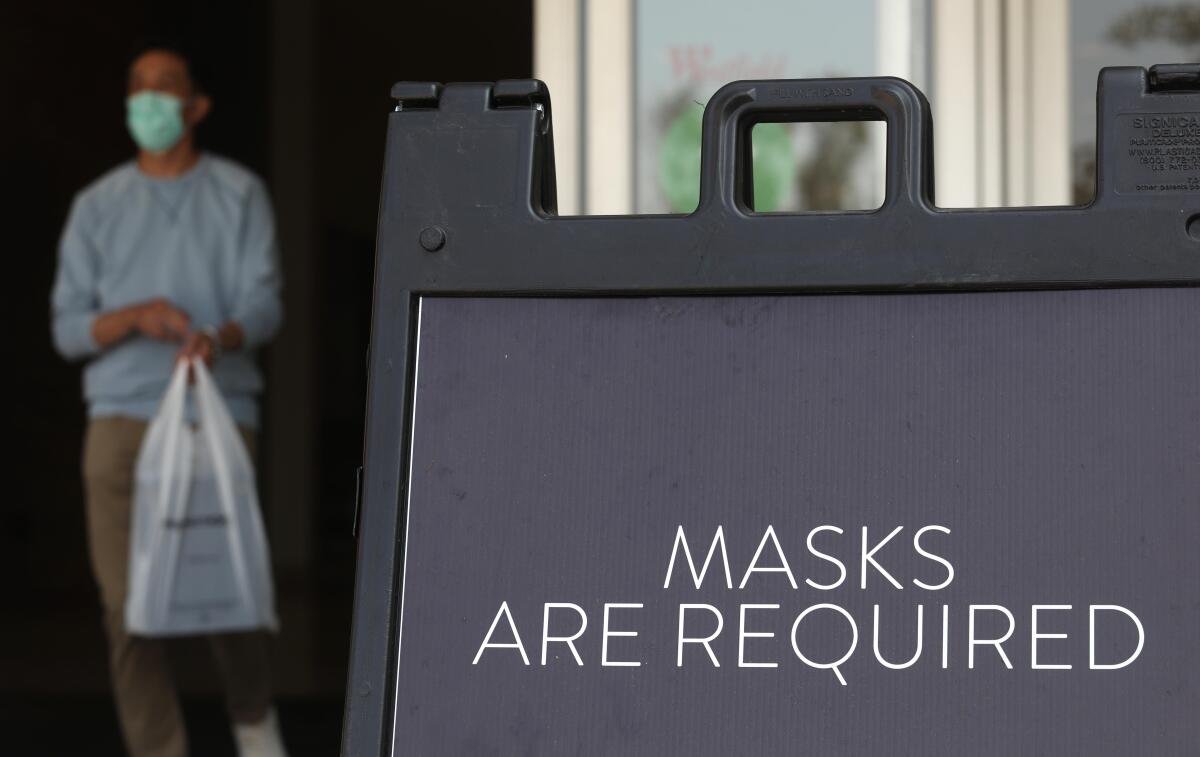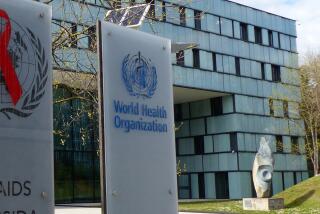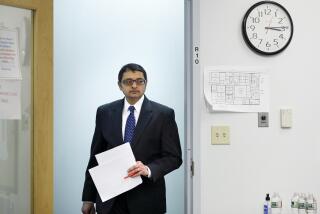Opinion: The CDC finally admits that the coronavirus can linger in the air

- Share via
Oh, how wrong I got it in the early pandemic days. I and everyone else.
When my daughter flew home from Chicago in March to spend what we thought would be a month or two of COVID-19 danger together, we followed the advice of the time: She changed clothes and showered right after arriving. Then we sat at least 6 feet apart — more like 8 feet apart — in the living room, doing our respective work by computer. I bathed the groceries like they were my babies, sprayed and wiped and scrubbed down surfaces with bleach at times, with rubbing alcohol other times. Who could find disinfectant wipes in those days?
We had our assigned seats so that we wouldn’t pick up germs, we turned lights on and off with our elbows, we washed our hands with surgery-prep precision. And we shared the air indoors, which, luckily for us, was not laced with the new coronavirus.
Lucky because we never wore masks in the house. No one at the CDC even mentioned masks for ordinary citizens except to tell us not to wear them, until doctors started writing about how even ordinary make-at-home cloth masks could prevent disease from spreading. Not in the way the short-in-supply N95 masks can — those were and still are needed to protect medical personnel. Cloth masks, instead of protecting us from others, would enable us to protect those around us. Actually, they do some of both, research has since discovered.
Physical distance is believed to protect us from virus-laden droplets, which we were told caused most coronavirus infection. But masks don’t just keep those droplets from making it far from their owners’ mouths and noses. They also cut down on the transmission of virus carried in aerosol form, wafting in the air for minutes and possibly hours.
Many of us had heard long ago that COVID-19 might be transmitted in aerosol form. The problem was that the CDC wasn’t buying it. It’s taken the CDC months to concede that airborne transmission of the virus is a serious concern, though scientists have been pleading for this recognition for months. The agency finally admitted it this week.
Aerosolized virus could certainly help explain the big differences we’ve seen in the virus risk for people outdoors versus inside. A droplet sneezed or coughed on us will be a problem in either setting. But aerosol disperses outside, diluting the viral load we otherwise might breathe, especially if we’re moving around instead of sitting down for an hour at a restaurant patio. Indoors, even if we’re a good distance from each other, it’s hanging around us with nowhere else to go.
With Trump’s medical team making up one COVID story after another as the people closely associated with him fall ill, it’s not surprising that the public hasn’t taken much notice of the CDC’s new airborne-transmission guidance. In fact, the timing seemed downright propitious for Trump, as though the CDC didn’t really want the public to notice. Consider that, in mid-September, the agency put out a similar advisory and then pulled it back a couple of days later, saying it had inadvertently released an early draft.
Aerosol transmission is bad news for the Trump administration. It makes masks, which he has scoffed at on numerous occasions, all the more important. Standing farther from people — not that he does that, either — isn’t going to do the trick indoors. This raises the chances for a surge in cases in coming weeks as chilly weather and shorter days drive people inside. It makes it harder for stores and restaurants to open in normal ways, with customers in larger numbers or without masks, which some people still refuse to wear. None of this is good for the economy, for our health or, most important in the eyes of the president, for him. Ventilation will become key in homes, workplaces, businesses and schools.
No one should have expected the CDC to get everything right at the beginning. It’s called the “novel” coronavirus because it is entirely new. All we understood at first was that it was quite contagious and appeared considerably more lethal than, say, flu.
But we also don’t know how many lives could have been saved if the CDC had led, instead of followed, on issues like public masking and airborne transmission. And now winter is coming.
More to Read
A cure for the common opinion
Get thought-provoking perspectives with our weekly newsletter.
You may occasionally receive promotional content from the Los Angeles Times.











